A brief note on Zamorins of Kozhikode
Zamorins own a significant position in Kerala’s history. Zamorin is called Samoodhiri in Malayalam language. They established their monopoly in Kozhikode in the 13th century and very soon they became a supreme power of mid-Kerala and North Kerala. They established trade in pepper and other Kerala spices with countries across the world, and earned fame in those countries as well, for their efficiency in administration.
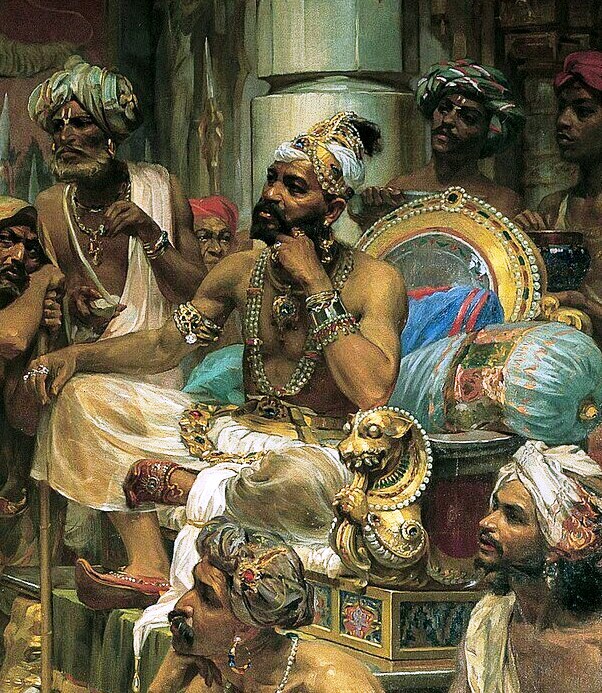
Veloso Salgado’s painting in 1898 which shows Zamorin of Calicut sitting on his throne
Revathy Pattathaanam
Revathi Pattathanam is an annual assembly of scholars held since ancient times at Kozhikode at Thali Temple since 14th century. It was under the governance of Zamorins. Since the assembly starts on Revathy star of Thulam month, it came to be known by this name. Serious arguments and tests on Vyaakaranam (Grammer), Vedanta (A branch of Hindu Philosophy), Tharka Shastra (debate) and Mimamsa were conducted, and prizes were distributed to the winners also. The winners also receive high positions such Panditha Varenya Bhattasthaanam, shortly called Pattathaanam. This procedure is followed till now in Thali temple, and the festival commences on Revathy asterism of Thulam month every year.
The origin of Zamorins
Nediyirippu was the state capital of Zamorins during their early years, when it was only a very small kingdom. Since the fame of Nediyirippu increased, rulers of that state came to be known as Swamy Nambyathiri Thirumulpaad (Swamy Thirumulpaad), who later came to be known as Samoori and Saamoodiri (Zamorins in English). Europeans called them as Zamorins. When they extended their power and influence across seas and mountains, they assumed the name, Kunnala Konathiri which means the lord of seas and mountains. As Kozhikode port came under the governance of Zamorins, they also came to be known as Poonthurakon.
Promotion of art and literature
Kozhikode claims to have its own distinct culture art and literature, since Zamorins came to power. Many of such traditional art forms and also Malabar culture exclusively belongs to them since then. The rulers were patrons of arts and literature, and gave significant contributions as well. Manavikraman who served as Zamorin of Kozhikode in the 15th century was a Sanskrit scholar who authored many works.
His court was filled with 19 royal poets, known by the name, Pathinettara Kavikal, who played a significant role in shaping the culture and social life of Kozhikode then. Pathinettara Kavikal literally means 18 ½ poets, and Punam Namboodiri was assumed to be Ara Kavi (Half-poet). They were scholars of exceptional caliber. Among these 19 poets, Punam Namboodiri was most popular as a Malayalam poet.
Zamorins also played a significant role in promoting Kerala’s own Kathakali, which is deeply linked with Kerala culture. Krishnanattom – the ballet was coded, choreographed and presented by Zamorin Manavedan. Kathakali which later originated took deep influences from Krishnanattom. Read more to get the story of origin of Kathakali, and its links to Ramanattom and Krishnanattom.
Story of Cheraman Perumal told in History books
There is a legend in the book, Keralolpathi about origins of Kozhikode and Zamorins. As per legends, Cheraman Perumal, the last Chera ruler who ruled whole Kerala distributed his whole kingdom to friends and relatives before he went for pilgrimage to Mecca. Once when his kingdom was attacked, he received help from Manichan and Vikraman, two Eradi brothers from Nediyirupp. Eradi brothers later set for pilgrimage and returned back, Cheruman Perumal has already distributed the whole kingdom to his relatives, except a very small area. So Cheraman Perumal gave that piece of land to the brothers along with his sword, and asked them to earn everything with their wisdom, attack and killings. Here is the story.
Zamorins’ efficiency in administration
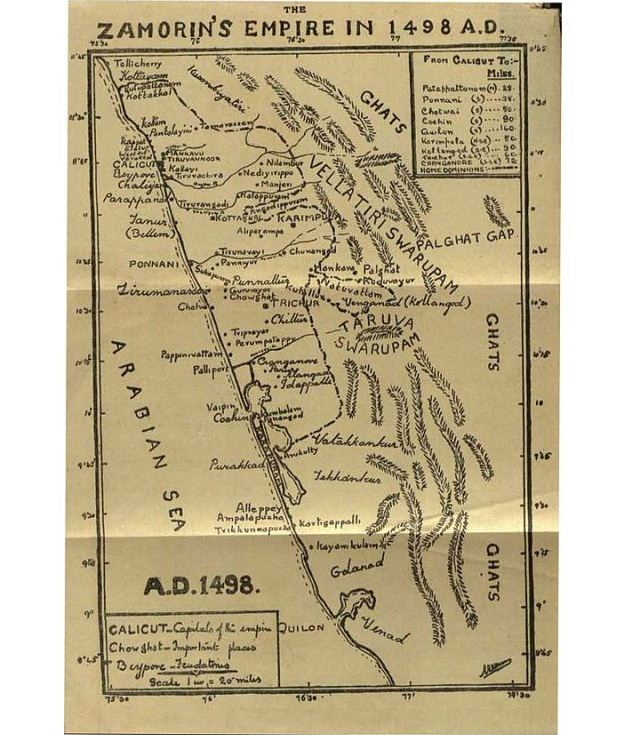
The political map of powerful kingdom of Zamorins
Zamorins owned 4 prime ministers known by the name, Sarvaadhikaaryakkar. There were numerous ministers too, known by the name Kaaryakkar. Zamorins sought the advice of his ministers and also took care of the traditions for ruling their kingdom. The whole kingdom was divided into different regions, and the power of administration was given to Naaduvaazhikal (landlords). They handled the administration for many generations and was traditionally passed over to next. When a new landlord comes into power, they offered a big amount of money to Zamorin, known by the name Purushantharam. During festival seasons and special occasions, landlords use to give special offerings to Zamorins, known by the name, Kaazhcha Vaikkal. As rules and regulations were strict, and convicts were given harsh and severe punishments, crimes were not common those days – as recorded in many history books.
Great battles fought by Zamorins
Zamorins who ruled a small state then, through tactics and talents expanded their kingdom. When Portuguese reached Kozhikode in 1498 via port, Zamorins have already turned supreme powers. Almost all landlords from Malabar to Kochi served as Saamanthan (chieftain) to Zamorin. They were feudal estate owners or ruling sub-clan belonging to Nair community. Through his cleverness and tactics, he brought Kolathiri Raja of south Kerala under his control, and became the powerful ruler of Kerala.
While he was deliberately trying to conquer Thirunavaya on the banks of Bharatapuzha river, he frequently fought with Valluva Konathiri of south Malabar. He declared to establish monopoly over the biggest festival then, Mamankam held at Thirunavaya once in 12 years, under the control of Chera kings then. He defeated Valluva Konathiri and succeeded in his mission.
Koyil Kotta which later came to be known as Kozhikode
Eradi brother’s kingdom was situated in Nediyirippu, which was away from port and seas. So they attempted to establish a path to seas, so that they can interfere in the trade through seas. They continuously fought for half a century to finally succeed in it. They fought with Porlaathiris, the rulers of Polanaadu who ruled Kozhikode and nearby places then and finally conquered this state. After that they shifted their kingdom from Nediyirippu to Kozhikode. They built a new palace with forts for its safety. The palace was called Koyil, and hence the fort came to be known as Koyil Kotta. The ‘Koyil ‘ surrounded by Kotta (fort) later came to be known as Kozhikode.
The powerful army of Zamorins
Zamorins prepared a powerful army. The landlords under the Zamorins also had their own soldiers who were given special training, and used for battles of Zamorins. Such Kalaris (place where they are taught) in the outskirts of the kingdom were filled with Nair youths who were given training to use swords, shields, bows, arrows, spears etc. The power of his cavalry was given to Kuthiravattam Nair. Thinayencheri Elayath who assumed the name Vedikurikkal was assumed the power of cantonment. Zamorin also owned a powerful navy which protected his country from many attacks, and the heads of the navy team were known by the name, Kunjali Marakkar. 4 Kunjali Marakkars belonging to four generations have served Zamorins.
Fall of Zamorins
Zamorins were very much weakened by the frequent attack of Portuguese. Their fall was completed by the attack of Mysore kings in 1766. Hyder Ali who attacked North Kerala, conquered Kolathum Naad, Kottayam and Kadathanad and reached Kurumbura Naad. With no alternatives left, Zamorin met Hyder Ali in person, and offered all his belongings to spare his kingdom. But Hyder Ali demanded 1 crore gold coins (swarna mohar). As Zamorin was not able to give this huge amount, as soon as Hyder Ali’s army reached Kozhikode, he sent his family members to Ponnani and committed suicide by self-immolation. He set his palace to fire to do so.
After the death of Zamorin, Hyder Ali established his power in Kozhikode, and the power was later handed over to his son Tipu Sultan. After Sreeranga Pattanam treaty was made between British and Tipu, Kozhikode and other regions of Malabar came under the power of British.
Image source: Wikipedia


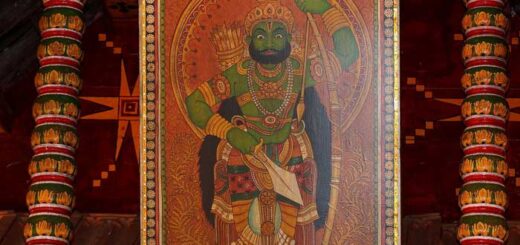
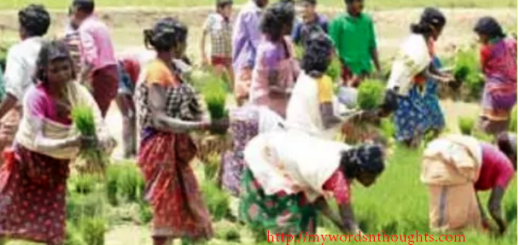
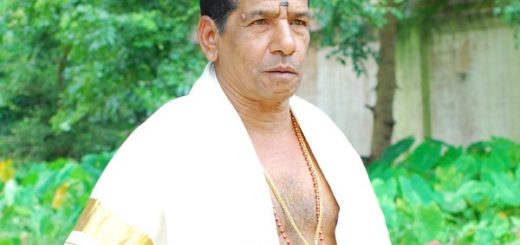








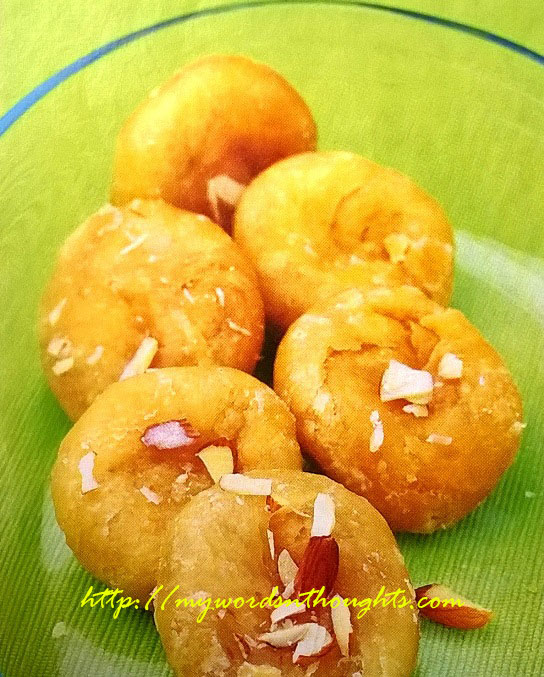

Recent Comments